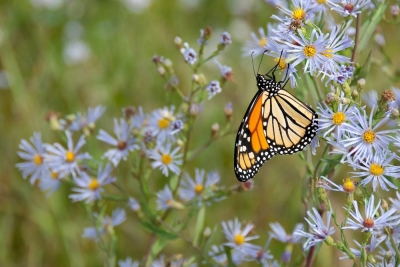
When a bee stops at a flower to gather nectar and pollen, it contacts the anthers. Pollen from the anthers attaches to hairs on the bee’s body. When the bee moves on, it carries that pollen to the stigma of the next flower it visits. This transfer of pollen between flowers results in pollination. Here’s a look at two unusual plants that have unique mechanisms to attract other creatures for helping with their pollination
Dish-advantage
Marcgravia evenia, a plant native to Cuba, has bowl-shaped leaves that act as a satellite dish to reflect sound waves emitted by bats. They also enable the plants pollinators the Cuban nectar-feeding bats-to locate the plant easily amidst the surrounding foliage. Researchers believe that the plant has developed the bowl-shaped leaves in addition to its regular leaves because the curved shape reflects sound waves more efficiently. Even though many plant species are pollinated by bats, this is the first instance of a plant evolving special leaves to aid echolocation of bats.
Bizarre appearance
Hydnora africana is a bizarre-looking parasitic plant with no leaves. It lives off the roots of other plants. It grows completely under the ground except for its flower, which usually grows above the ground. The flower is fleshy from inside but hard as wood from the outside and attracts dung and carrion beetles with its strong, fetid smell. As these insect pollinators stop by, they get trapped in the stiff bristles that line the inner portion of the flower. The flower opens out after a while, allowing the insects to escape but only after they have picked up or deposited pollen. Once has taken place, the flower develops into an edible fruit containing over 20,000 seeds. Hydnora africana is native to the arid regions of southern Africa.
Picture Credit : Google




